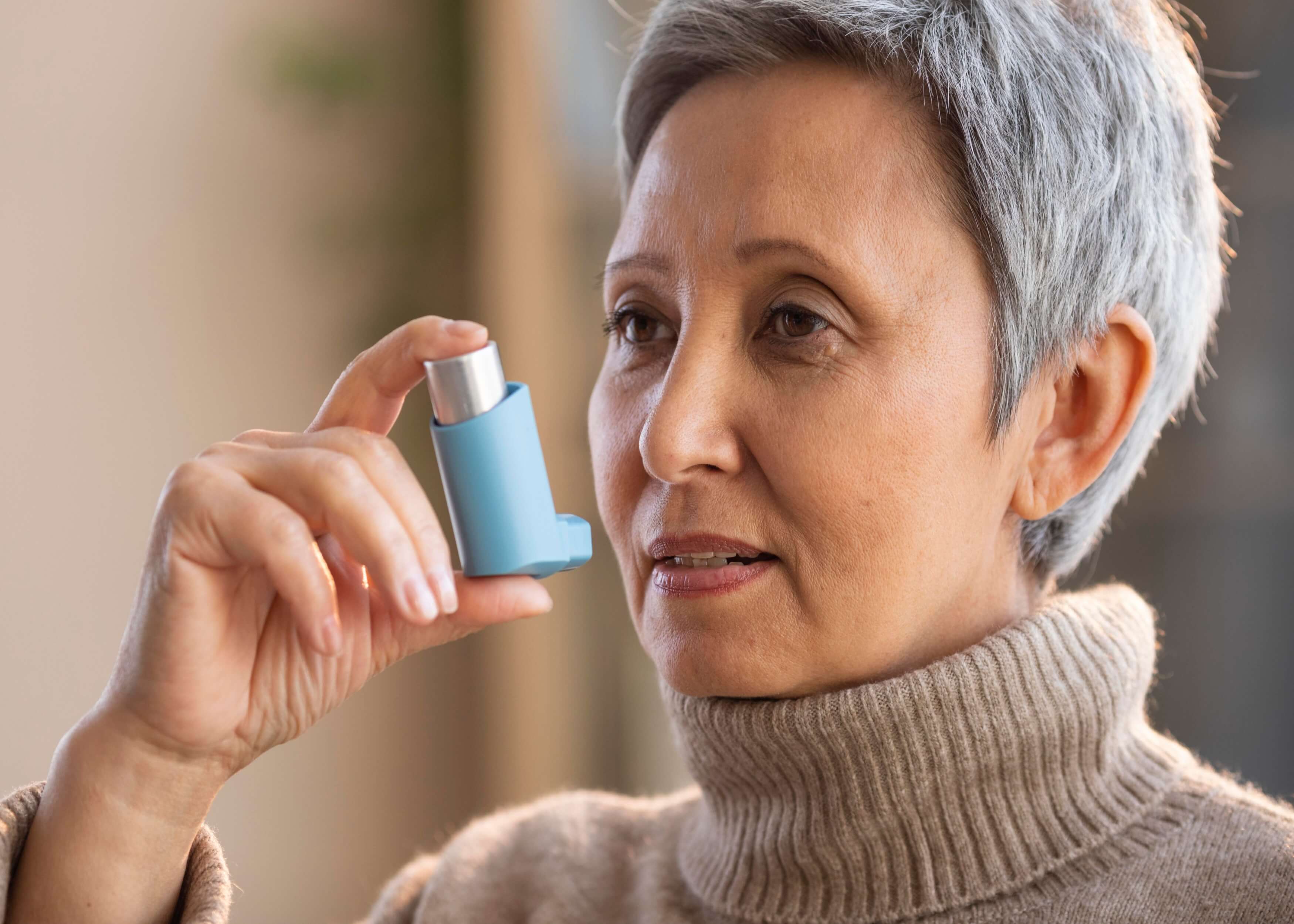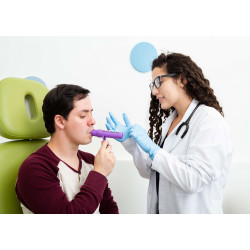PERSONAL BLOG
Inhaler technique consultation (OSCE)
Introduction
- Greet the patient and introduce yourself
- Confirm patient details ✍
- Check the current technique the patient uses
- Check the patient is not in any pain
- Wash hands ✋
Explanation
Briefly describe the inhaler the patient is on:
 Reliever inhalers (e.g. salbutamol)
Reliever inhalers (e.g. salbutamol)
 Relieves sudden asthma attacks
Relieves sudden asthma attacks
 Relaxes airways to enable easier breathing
Relaxes airways to enable easier breathing
 Inhale when you feel short of breath (no more than 3x per week as assessed by GP)
Inhale when you feel short of breath (no more than 3x per week as assessed by GP)
 Preventer inhalers (e.g. beclomethasone)
Preventer inhalers (e.g. beclomethasone)
 Reduces airway swelling to prevent tightening
Reduces airway swelling to prevent tightening
 Used to reduce asthma attacks
Used to reduce asthma attacks
 Inhale ‘x puffs x times per day’ (regular dose)
Inhale ‘x puffs x times per day’ (regular dose)
 Rinse mouth afterwards to prevent oral candidiasis
Rinse mouth afterwards to prevent oral candidiasis
 SMART, Single Maintenance and Reliever Therapy, regime (e.g. Symbicort, Duoresp, Spiromax, Fostair)
SMART, Single Maintenance and Reliever Therapy, regime (e.g. Symbicort, Duoresp, Spiromax, Fostair)
 Both a preventer and a reliever
Both a preventer and a reliever
 Use this regularly, ‘x puffs twice per day and x puffs when having an asthma attack’
Use this regularly, ‘x puffs twice per day and x puffs when having an asthma attack’
 Rinse mouth afterwards to prevent oral candidiasis
Rinse mouth afterwards to prevent oral candidiasis
Check the patient’s understanding:
 Ask them to summarise what you have told them
Ask them to summarise what you have told them
Demonstrate the effective technique for the inhaler
 Pressurised metered-dose inhaler (pMDI) isdescribed here as it is commonly used in OSCEs
Pressurised metered-dose inhaler (pMDI) isdescribed here as it is commonly used in OSCEs
Preparation:
- Test remove the cap, shake and test the inhaler before using if it has not been used for ≥ 5 days
- Check dose counter regularly check if the dose counter is running low so you can get a replacement before running out
- Check the expiry date usually found on the metal cannister, after this date it will no longer be effective 📅
Procedure:
- Prepare the inhaler:
- Hold inhaler upright
- Remove cap
- Shake inhaler
- Inhalation:
- Sit up
- Tilt chin up
- Seal your lips 👄 around the mouthpiece
- Breathe in slowly as you press the cannister down
- Continue breathing in until your lungs feel full
- Remove the inhaler from your mouth 👄
- Close your lips 👄
- Hold your breath for 10 seconds
- Breathe out gently
- Finish:
1. Replace the cap
2 Rinse your mouth if the inhaler contained steroids 👄
 If you are prescribed 2 puffs at any one time, wait 30 seconds to 1 minute, then repeat
If you are prescribed 2 puffs at any one time, wait 30 seconds to 1 minute, then repeat
Assess the patient’s technique
 Ask the patient to demonstrate what you have just explained and provide positive feedback until they are using the inhaler correctly ✅
Ask the patient to demonstrate what you have just explained and provide positive feedback until they are using the inhaler correctly ✅

Describe and explain Spacer devices
 Spacers can aid the deposition of the corticosteroids into the lungs and thus decrease the amount in the mouth, reducing side effects!
Spacers can aid the deposition of the corticosteroids into the lungs and thus decrease the amount in the mouth, reducing side effects!
 Volumatic and AeroChamber are commonly used Spacer devices.
Volumatic and AeroChamber are commonly used Spacer devices.
- Prepare inhaler
- Attach the mouthpiece of the inhaler to the spacer
- Breathe out to empty your lungs
- Wrap your lips 👄 around the mouthpiece of the spacer
- Breathe in and out deeply through the spacer, several times
- Repeat if prescribed
 Spacer devices must be washed monthly with detergent
Spacer devices must be washed monthly with detergent
 You should air dry your spacer, do not wipe as the resulting static could cause the corticosteroid particles to stick to the device
You should air dry your spacer, do not wipe as the resulting static could cause the corticosteroid particles to stick to the device
 Replace your spacer device annually
Replace your spacer device annually
Complete the consultation
- Ask if the patient has any remaining questions ❓
- Explain the side effects ❌ of not following the technique you have demonstrated
 Oral thrush
Oral thrush
 Palpitations and tremor
Palpitations and tremor
3. Advise the patient to call 999 if they do not respond to 10 puffs of their inhaler when having an asthma attack
4. Give the patient the relevant information leaflet to remind them of the technique
5. Organise follow up appointments so you can see how they are getting on with the inhaler technique
6. Thank the patient
7. Wash hands ✋
Summary:
- Greet the patient
- Explain and describe the type of inhaler
- Demonstrate the technique for this inhaler
- Assess the technique the patient uses
- Explain and demonstrate how to use spacer devices
- Complete the consultation by explaining potential side effects
Asthma: Steroid Inhalers
Related Articles
This step by step guide is designed to take you through the respiratory examination in OSCEs.
This step by step guide takes you through measuring the peak expiratory flow rate (PeFR) in OSCEs.















